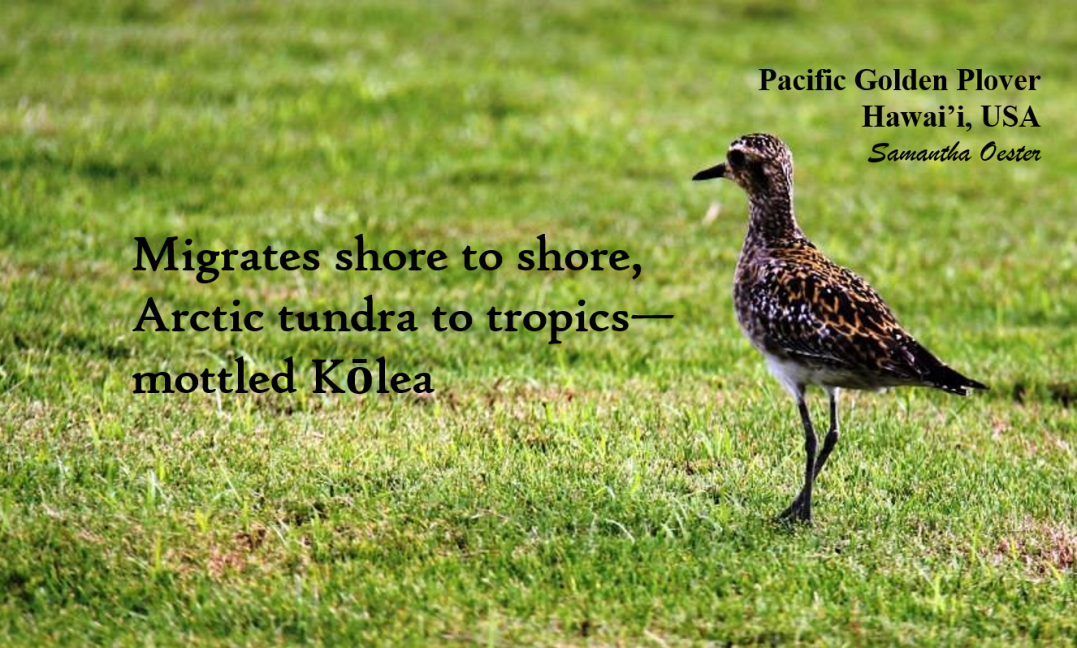Kōlea

Pacific golden plovers (Pluvialis fulva) are waders, also known as shorebirds. They breed in the Arctic—Siberia and western Alaska—in June and July. They winter across the Pacific—southeast Asia to northeastern Africa, as well as California and Hawai’i. Kōlea is the Hawai’ian name for the species. Plovers belong to the subfamily Charadriinae, which includes 66 species of birds. When not breeding, the species is commonly found on short-grass fields and lawns, mudflats, shores, and beaches. Pacific golden plovers have long-distance commutes—they regularly cover more than 2,000 miles in a single flight during migration. The species has short bills, large round heads, and mottled gold and black backs. They live for about 15 years in the wild, forming monogamous pairs each breeding season. Breeding pairs make nests on the ground in vegetated tundra with excellent drainage. To protect nests, adults put on a very convincing broken-wing act to lure away predators. Pacific golden plovers generally forage for food by sight. They mainly eat insects, crustaceans, and plants. Pacific golden plovers are threatened by multiple effects of climate change. For example, a recent study predicted their breeding grounds in the Arctic will be nearly eliminated by 2070.
Photo and haiku by: Samantha Oester